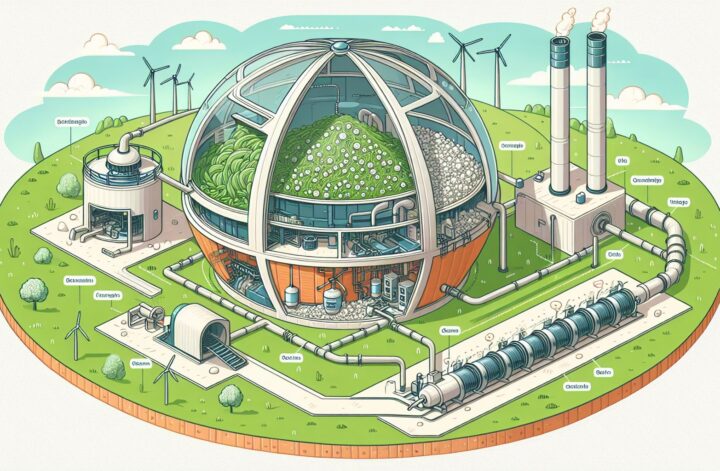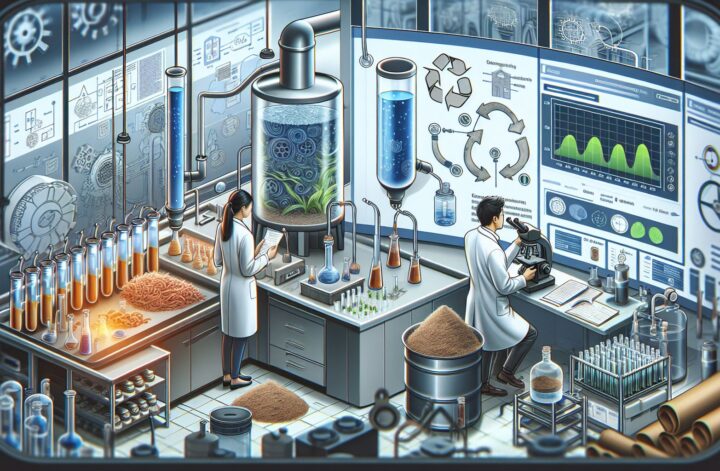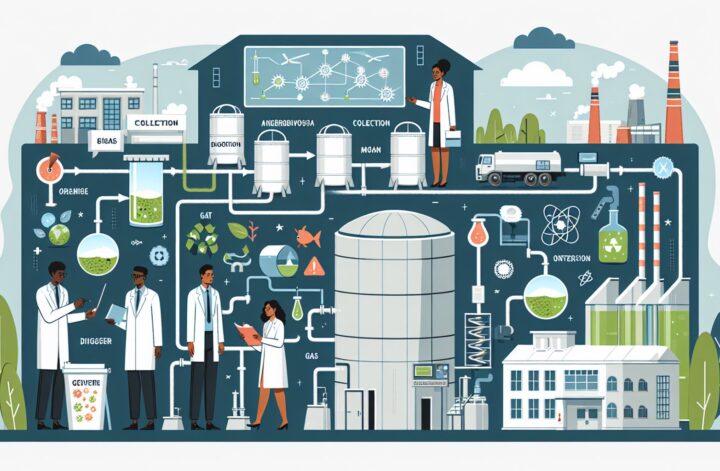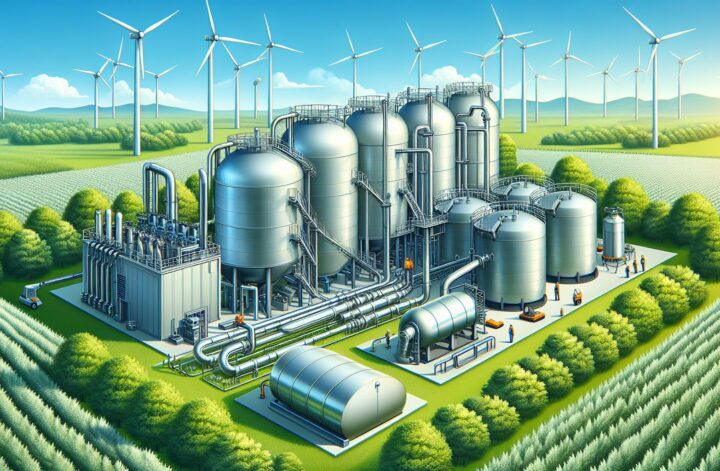Anaerobic digestion is an integral part of organic waste treatment. This biological process occurs when organic material is broken down by bacteria in the absence of oxygen. It’s a method that’s used widely in wastewater treatment plants and is rapidly gaining popularity for treating municipal solid waste and biodegradable waste in the commercial and industrial sectors.
In this comprehensive guide, we take a detailed look at the design and working of anaerobic digesters, and the critical role they play in the production of biogas – a significant form of renewable energy.
An Introduction to Anaerobic Digestion
Before we delve into the specifics of digester design, it’s important to understand the underlying process of anaerobic digestion. There are four key stages involved:
- Hydrolysis: Complex organic compounds are broken down by enzymes into simpler compounds, such as monosaccharides, amino acids, and fatty acids.
- Acidogenesis: The simple compounds are further broken down into volatile fatty acids and alcohols.
- Acetogenesis: The acids and alcohols produced are further broken down into hydrogen, carbon dioxide, and acetate.
- Methanogenesis: Methanogenic bacteria breakdown the byproducts from Acetogenesis into methane, carbon dioxide, and water. These gases can be collected and used as renewable energy.
The bacteria involved in this process team together in a series of syntrophic relationships, each dependant on the byproducts produced by others.
Such a fascinating process requires a most specialized setting. Enter the anaerobic digester.
Characteristics of an Effective Anaerobic Digester
Any effective digester should have a few baseline features to ensure maximum biogas production.
-
Control Over Hydraulic And Solid Retention Time: These controls allow the digestate – the byproduct of the digestion process – to remain in the digester for longer, thus ensuring higher biogas yield.
-
Rigorous Temperature Control: Anaerobic digestion can occur under mesophilic (around 35°C) or thermophilic (50°C-60°C) conditions. While thermophilic digestion may increase biogas yields, maintaining higher temperatures can be more energy-intensive.
-
Robust Mixing Mechanisms: Proper mixing promotes better contact between the bacteria and the organic material, further optimizing the digestion process.
-
Monitoring and Adjustment for Inhibitory Components: The presence of ammonia, sulfide, and certain trace elements can potentially inhibit the digestion process or make conditions toxic for the bacteria. Mechanisms to monitor and adjust for these components are crucial.
Moreover, it is worth noting that “one size does not fit all” – the design may vary widely across different types of digester units.
Digester Design: Types and Mechanisms
When it comes to the design of anaerobic digesters, there are several options available. These range from low-rate to high-rate and single-stage to multi-stage units, each with their advantages.
-
Low-Rate Digesters: They are often known as septic tanks or leach fields. They tend to have long retention times and are used mostly for the breakdown of sludge and other organic waste.
-
High-Rate Digesters: These can process material much faster, thanks to shorter retention times, increased loading rates, and better mixing. They are further subcategorized into Upflow Anaerobic Sludge Blanket (UASB) reactors, Expanded Granular Sludge Bed (EGSB) reactors, and Internal Circulation (IC) reactors.
-
Single-Stage Digesters: All the stages of anaerobic digestion occur in one tank. They are simple to design and operate, but control over individual stages is somewhat limited.
-
Multi-Stage Digesters: The process occurs over multiple tanks, each designed to optimize a specific stage of digestion. This allows for better control but increases the complexity and cost of the system.
In recent years, co-digestion – the process of mixing different types of organic materials for anaerobic digestion – has also gained popularity due to its potential for increased biogas production.
The Output: Biogas and Biosolids
Finally, the ultimate output of the anaerobic digestion process should be mentioned – biogas and biosolids.
-
Biogas: It’s primarily composed of methane (60%–70%) and carbon dioxide (30%–40%), with traces of other gases like hydrogen sulphide. Methane capture is crucial because it’s a potent greenhouse gas if released, but a valuable energy resource when captured. After biogas scrubbing and upgrading, it can be used as fuel in combined heat and power (CHP) units or converted into biomethane for use in vehicles or the gas grid.
-
Biosolids: This semi-solid residual material is full of organic matter and nutrients, making it suitable as a soil conditioner or fertilizer once thoroughly processed.
Concluding Thoughts
In conclusion, anaerobic digestion stands as an exciting solution in our quest for renewable energy and waste management. However, the design of anaerobic digesters should not be taken lightly – it needs expertise and a profound understanding of the underlying microbiology. While challenges persist, with continued innovation and thoughtful design, we can harness this biomethanation process more effectively in the fight against environmental degradation.




